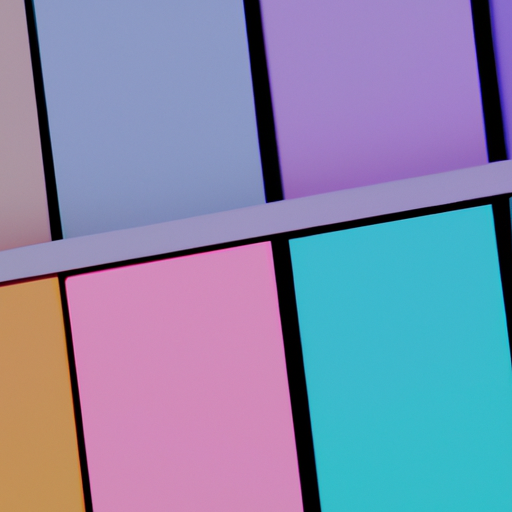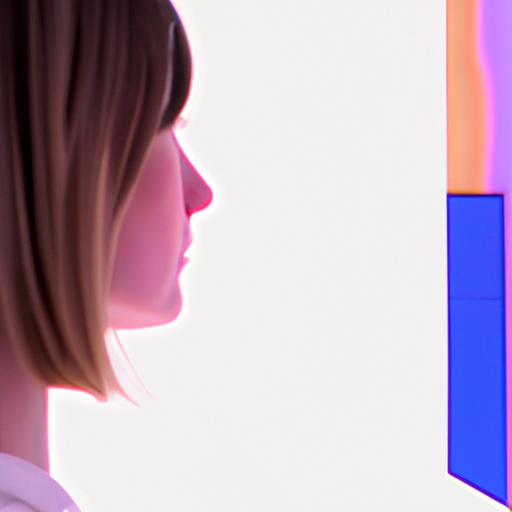
-
Table of Contents
- Pastel Perfection: Gentle Hues in Modern Design
- The Rise of Pastel Hues
- The Psychology of Pastel Colors
- 1. Serene Blue
- 2. Playful Pink
- 3. Refreshing Green
- 4. Soothing Lavender
- Using Pastel Colors in Modern Design
- 1. Accent Walls
- 2. Furniture and Accessories
- 3. Soft Furnishings
- 4. Color Blocking
- Case Studies: Pastel Perfection in Action
- 1. The Glossier Showroom
- 2. The Ace Hotel, Palm Springs
- The Benefits of Pastel Perfection
- Conclusion
Pastel Perfection: Gentle Hues in Modern Design

When it comes to design, color plays a crucial role in setting the mood and creating a visually appealing space. While bold and vibrant colors have their place, there is a growing trend towards using pastel hues in modern design. These soft and gentle colors have the power to transform a space, creating a sense of tranquility and sophistication. In this article, we will explore the world of pastel perfection and delve into why these gentle hues are becoming increasingly popular in modern design.
The Rise of Pastel Hues
Pastel colors have a long history in art and design, with their origins dating back to the Renaissance period. However, it is in recent years that pastel hues have experienced a resurgence in popularity. This can be attributed to several factors:
- Minimalism: The rise of minimalism in design has paved the way for pastel colors to shine. Pastels complement the clean lines and simplicity of minimalist design, adding a touch of softness and warmth to an otherwise stark space.
- Wellness and mindfulness: In today’s fast-paced world, people are seeking ways to create a sense of calm and tranquility in their surroundings. Pastel colors, with their soothing and gentle nature, help to create a serene environment that promotes relaxation and mindfulness.
- Gender-neutral appeal: Pastel colors are often associated with femininity, but they have evolved to become more gender-neutral in modern design. The softness of pastels appeals to both men and women, making them a versatile choice for any space.
The Psychology of Pastel Colors
Colors have a profound impact on our emotions and behavior. Pastel colors, in particular, evoke a range of positive emotions and have a calming effect on the mind. Let’s explore the psychology behind some popular pastel hues:
1. Serene Blue
Blue is often associated with calmness and tranquility. Lighter shades of blue, such as baby blue or powder blue, create a serene and peaceful atmosphere. This makes them an excellent choice for bedrooms, bathrooms, and other spaces where relaxation is key.
2. Playful Pink
Pink is often associated with femininity and sweetness. However, pastel pinks, such as blush or rose quartz, have a more subtle and sophisticated appeal. These gentle hues can add a touch of playfulness and warmth to a space without overwhelming it.
3. Refreshing Green
Green is the color of nature and is often associated with growth and renewal. Pastel greens, such as mint or sage, bring a refreshing and rejuvenating vibe to a space. They work well in areas where a sense of freshness and vitality is desired, such as kitchens or home offices.
4. Soothing Lavender
Lavender is a color often associated with relaxation and tranquility. Pastel lavender hues create a soothing and calming effect, making them an excellent choice for bedrooms or meditation spaces. They can help create a peaceful environment that promotes restful sleep and relaxation.
Using Pastel Colors in Modern Design
Now that we understand the appeal and psychology behind pastel colors, let’s explore how they can be incorporated into modern design:
1. Accent Walls
One way to introduce pastel colors into a space is by creating an accent wall. This can be done by painting one wall in a pastel hue or using pastel-colored wallpaper. The softness of the pastel color will draw attention and create a focal point in the room.
2. Furniture and Accessories
Pastel-colored furniture and accessories can add a pop of color to an otherwise neutral space. A pastel-colored sofa or chair can become a statement piece in a living room, while pastel-colored cushions or throws can add a touch of softness to a bedroom.
3. Soft Furnishings
Soft furnishings, such as curtains, rugs, and bedding, are an excellent way to incorporate pastel colors into a space. These items can be easily changed or updated, allowing for flexibility and experimentation with different pastel hues.
4. Color Blocking
Color blocking is a technique where different colors are used in distinct blocks or sections. Pastel colors lend themselves well to color blocking, as they create a harmonious and balanced look. This technique can be used on walls, furniture, or even in artwork.
Case Studies: Pastel Perfection in Action
Let’s take a look at some real-life examples of how pastel colors have been used to create stunning and modern designs:
1. The Glossier Showroom
Glossier, a popular beauty brand, has created a showroom in New York City that embodies the essence of pastel perfection. The space features soft pink walls, pastel-colored furniture, and delicate lighting. The overall effect is a dreamy and ethereal atmosphere that perfectly complements the brand’s aesthetic.
2. The Ace Hotel, Palm Springs
The Ace Hotel in Palm Springs is known for its mid-century modern design and pastel color palette. The hotel features pastel blue, pink, and green accents throughout its rooms and common areas. These gentle hues create a sense of nostalgia and playfulness, while still maintaining a modern and sophisticated look.
The Benefits of Pastel Perfection
There are several benefits to incorporating pastel colors into modern design:
- Creates a calming environment: Pastel colors have a soothing effect on the mind and can help create a sense of calm and tranquility in a space.
- Enhances natural light: Pastel colors reflect light, making a space feel brighter and more open. This is particularly beneficial in smaller rooms or spaces with limited natural light.
- Creates a timeless look: Pastel colors have a timeless appeal and can withstand changing design trends. They are less likely to go out of style compared to bolder and more vibrant colors.
- Allows for versatility: Pastel colors can be easily combined with other colors and design elements. They work well with neutrals, metallics, and even other pastel hues, allowing for endless possibilities in design.
Conclusion
Pastel colors have emerged as a popular choice in modern design due to their calming nature, versatility, and timeless appeal. These gentle hues have the power to transform a space, creating a sense of tranquility and sophistication. Whether used as accent walls, in furniture and accessories, or
